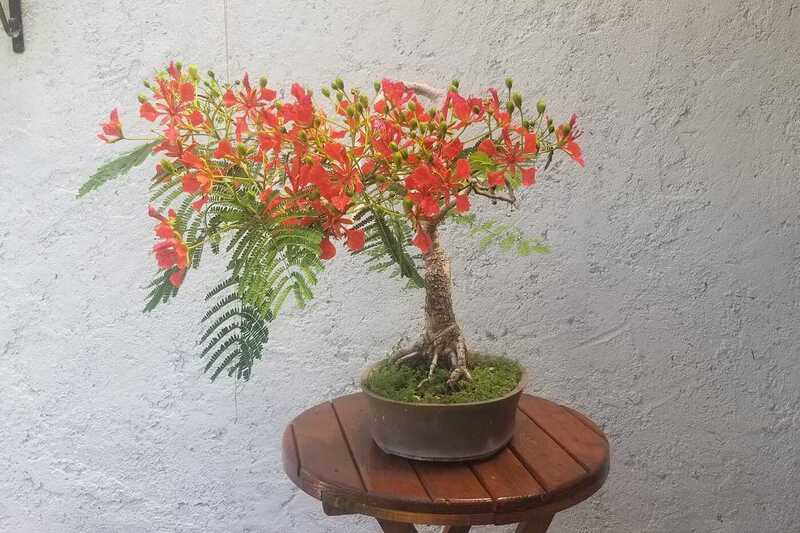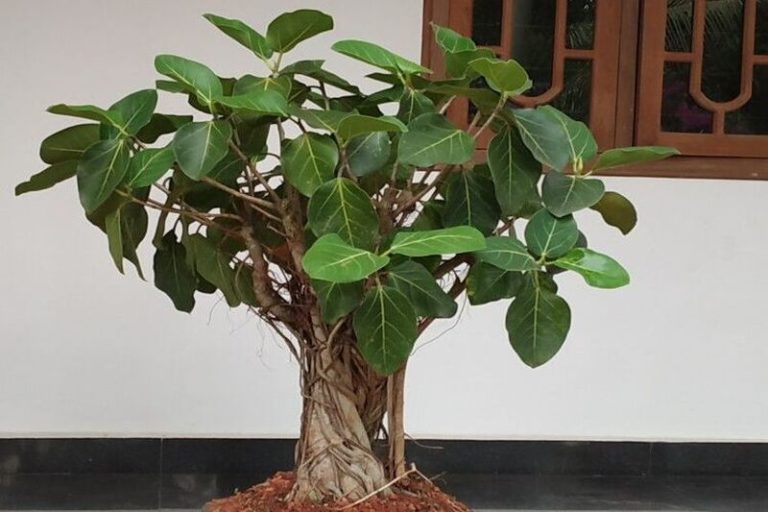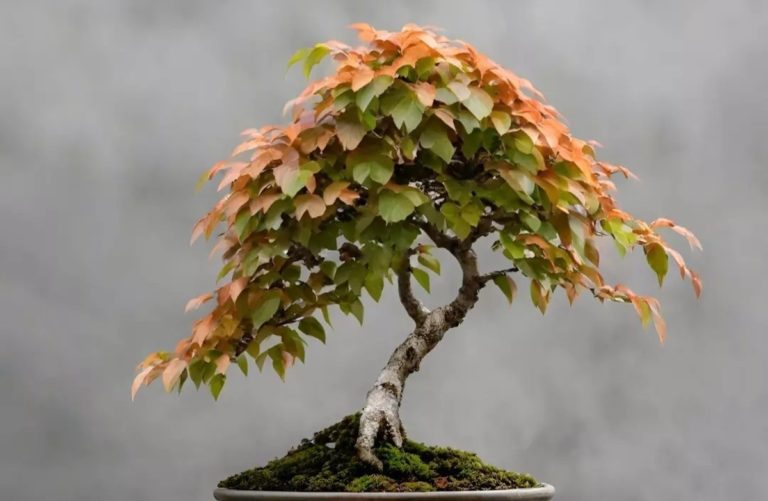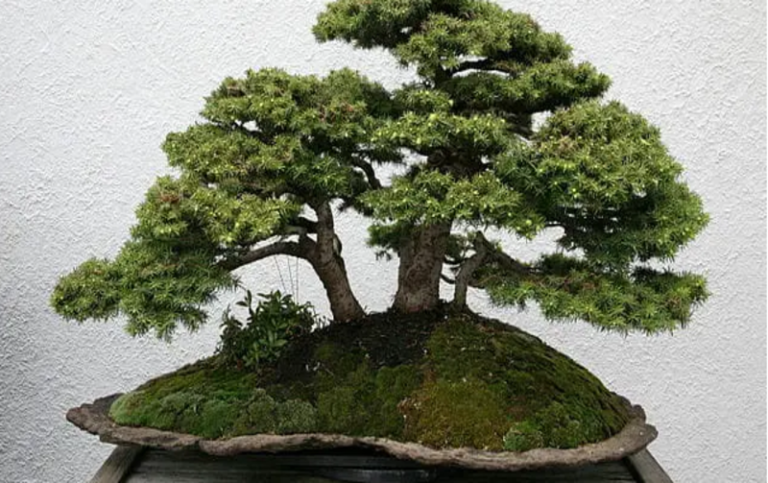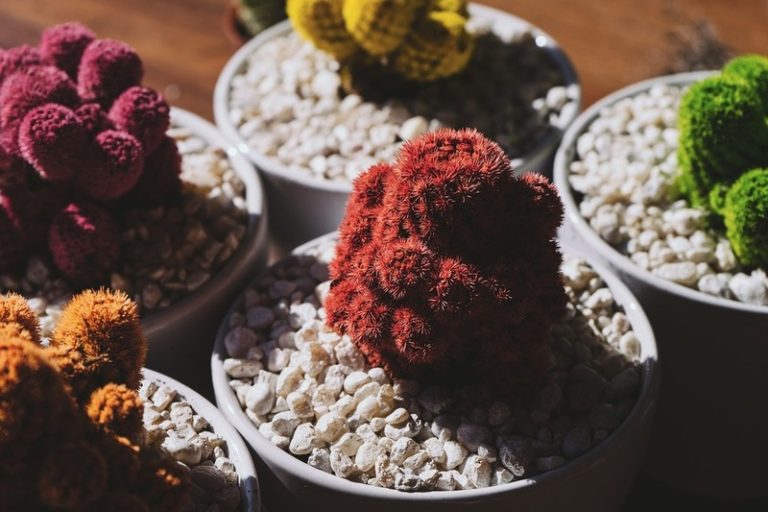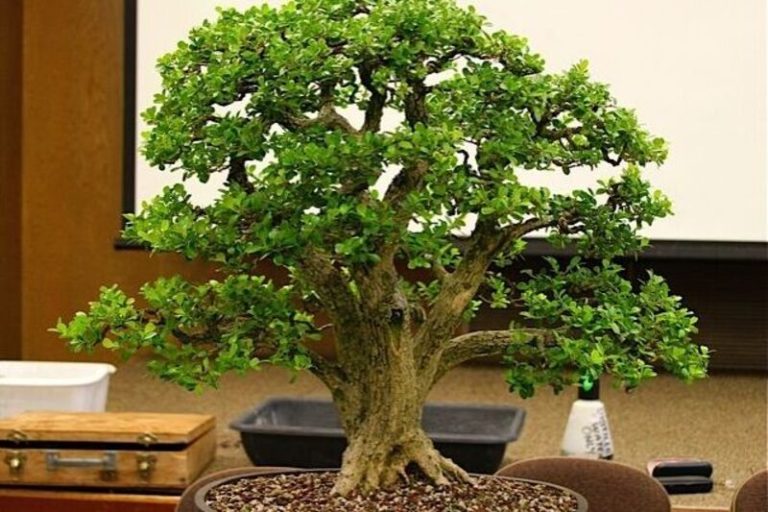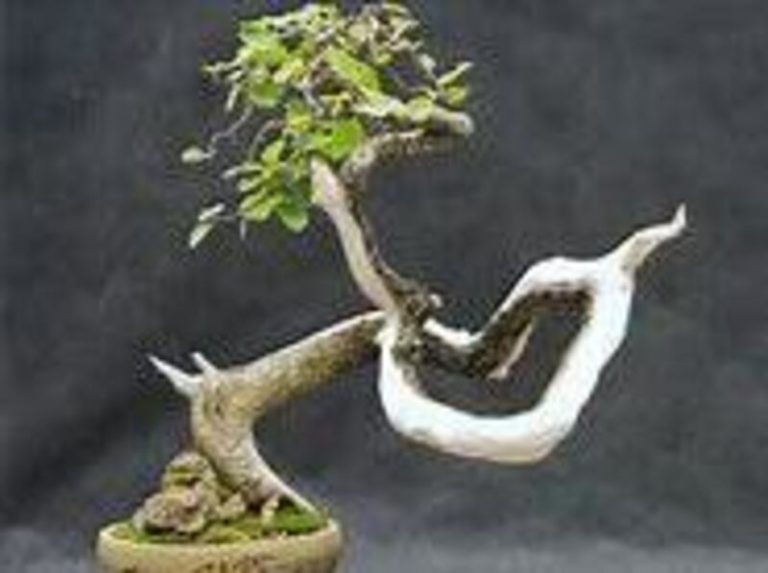Flame Tree Bonsai: A Unique and Rewarding Hobby for Nature Lovers
Flame tree bonsai is a popular variety of bonsai that originates from the tropical regions of Central America and the Caribbean. The flame tree, also known as Delonix regia, is a deciduous tree that produces beautiful, fiery red or orange flowers during the summer months. In tropical and subtropical regions around the world, the tree is cultivated as an ornamental plant due to its renowned beauty.
What is a Flame Tree Bonsai?
Flame Tree Bonsai is the practice of cultivating and shaping bonsai trees from the Flame Tree species (Delonix regia). It involves miniaturizing and training the trees to create a small, aesthetically pleasing version of the full-sized Flame Tree. This art form requires pruning, wiring, and shaping techniques to create a miniature representation of nature. Flame Tree Bonsai requires specialized knowledge and regular care to maintain the tree’s health and aesthetics. It is a visually stunning addition to bonsai collections, showcasing the unique characteristics of the Flame Tree in a compact form.
History and Origins of the Flame Tree Bonsai
The Flame Tree Bonsai’s history and roots may be traced back to the art of bonsai, which started in China over a thousand years ago before coming to Japan. The maintenance and sculpting of small trees in pots is known as bonsai, which translates as “tray planting” in Japanese.
The Flame Tree species, Delonix regia, is native to Madagascar but has been introduced to various parts of the world due to its striking appearance. It is unclear when exactly the Flame Tree was first used for bonsai purposes, as bonsai enthusiasts have experimented with a wide range of tree species throughout history.
The art of bonsai gained prominence in Japan during the Kamakura period (1185–1333) and continued to evolve and flourish over the centuries. Japanese bonsai masters refined and perfected techniques for shaping and caring for bonsai trees, including the Flame Tree.
Due to its distinct traits, such as spectacular blossoms and feathery leaves, bonsai enthusiasts from all over the world have recently embraced the Flame Tree as a great choice for bonsai care. Flame Tree Bonsai gardening has grown in popularity among bonsai lovers looking to highlight the beauty and elegance of this tree species in small form.
The specific history and origins of Flame Tree Bonsai as a distinct practice within the larger art of bonsai cultivation may vary depending on individual bonsai artists and their contributions to the art form.
Flame Tree Bonsai and Their Symbolism
The history and origins of the Flame Tree Bonsai can be traced back to the art of bonsai itself, which originated in China over a thousand years ago before spreading to Japan. Bonsai, meaning “tray planting” in Japanese, involves the cultivation and shaping of miniature trees in containers.
The Flame Tree species, Delonix regia, is native to Madagascar but has been introduced to various parts of the world due to its striking appearance. It is unclear when exactly the Flame Tree was first used for bonsai purposes, as bonsai enthusiasts have experimented with a wide range of tree species throughout history.
The art of bonsai gained prominence in Japan during the Kamakura period (1185–1333) and continued to evolve and flourish over the centuries. Japanese bonsai masters refined and perfected techniques for shaping and caring for bonsai trees, including the Flame Tree.
Because of its distinctive traits, such as colorful blossoms and feathery leaves, bonsai lovers from all over the world have recently embraced the Flame Tree as a great choice for bonsai care. Flame Tree Bonsai gardening has grown in popularity among bonsai lovers seeking to highlight the beauty and elegance of this tree species in small form.
The specific history and origins of Flame Tree Bonsai as a distinct practice within the larger art of bonsai cultivation may vary depending on individual bonsai artists and their contributions to the art form.
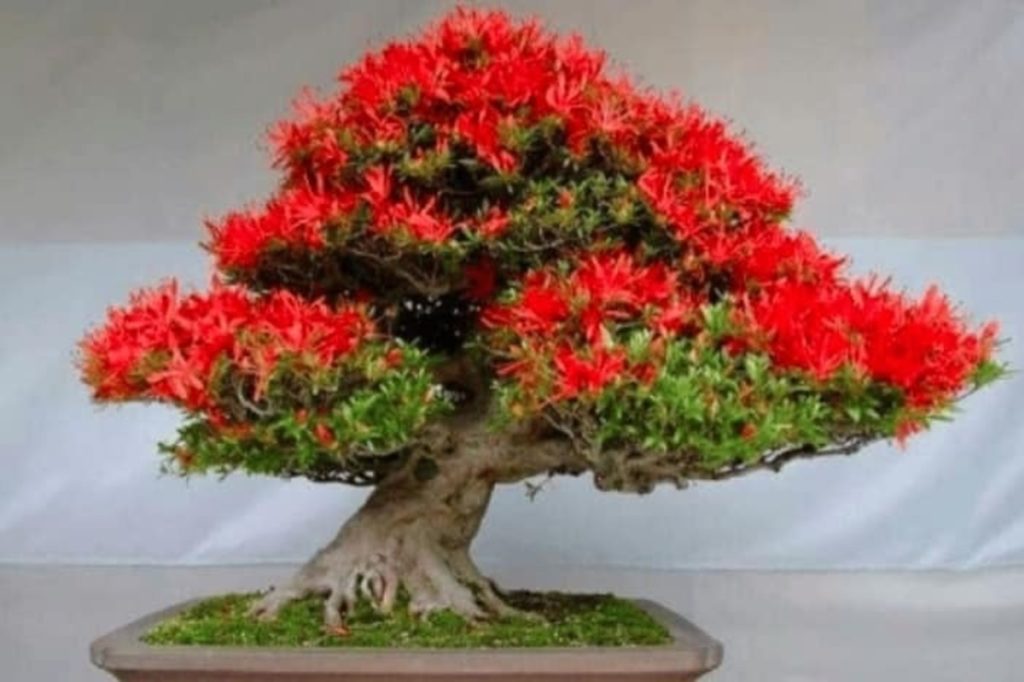
Types of Flame Tree Bonsai
When it comes to Flame Tree Bonsai, there isn’t a wide variety of distinct types or cultivars specific to the Flame Tree species (Delonix regia). However, there can be variations in the styling, size, and age of Flame Tree Bonsai based on individual preferences and the artistic vision of bonsai enthusiasts. Here are some variations or types that you may come across:
- Formal Upright: This style features a straight, upright trunk with well-distributed branches that gradually decrease in size as they ascend. The overall shape is balanced and symmetrical.
- Informal Upright: In this style, the trunk may exhibit more movement or a slight slant, creating a more natural and dynamic appearance. The branches are irregularly distributed and may have more pronounced curves.
- Slanting: The slanting style portrays a tree that appears to have been shaped by natural forces or wind. The trunk slants at an angle, giving the impression of resilience and adaptability.
- Cascade: The cascade style represents a tree growing on a slope or cliff, with the branches cascading downward. This style conveys a sense of drama and movement.
- Windswept: The windswept style suggests a tree subjected to strong winds, resulting in a tilted trunk and branches that appear to be swept in one direction. This style conveys a sense of struggle and endurance.
- Multi-Trunk: Flame Tree Bonsai can be styled with multiple trunks, creating a forest-like appearance. The trunks are typically intertwined or spaced apart, offering a sense of depth and complexity.
These are just a few examples of possible styles or variations of Flame Tree Bonsai. Bonsai enthusiasts can exercise their creativity and artistic expression to create unique interpretations and combinations of these styles. Ultimately, the choice of style depends on the desired aesthetic and the vision of the bonsai artist.
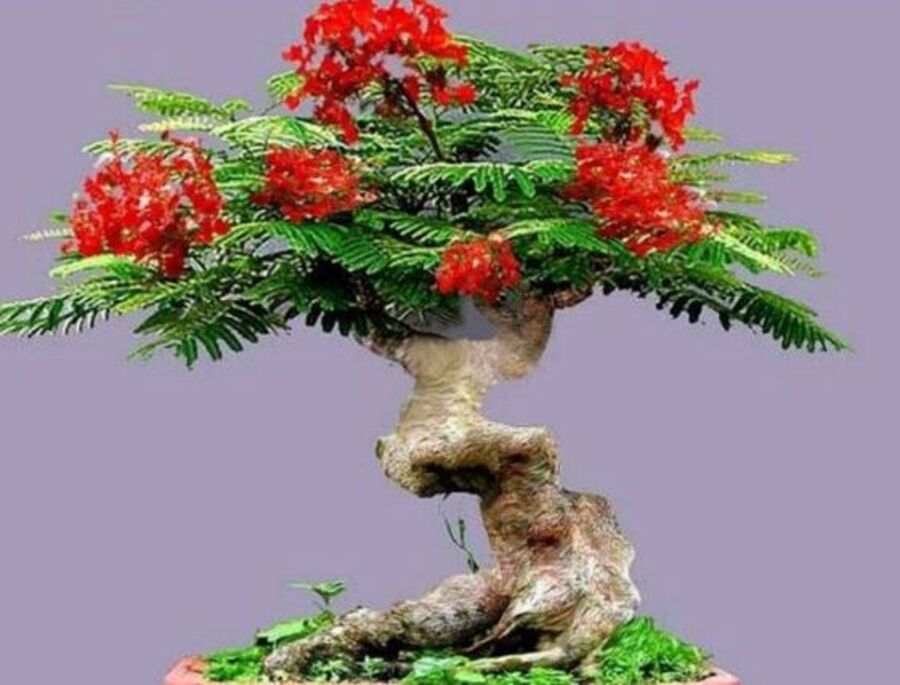
How to Grow a Flame Tree Bonsai
Growing a Flame Tree Bonsai requires time, patience, and careful attention to the tree’s needs. Here are some general steps to guide you in growing a Flame Tree Bonsai:
Tree Selection: Start by acquiring a young Flame Tree sapling or germinating seeds to grow your bonsai from scratch. Choose a healthy specimen with desirable characteristics, such as a straight trunk and well-formed branches.
Potting: Choose a bonsai pot with good drainage holes that is the right size. Use bonsai soil that drains well or a combination of peat moss, organic waste, and coarse sand. Put the Flame Tree in the bonsai pot, making sure the roots are evenly spread out and not too tight.
Pruning and Shaping: Begin by pruning the Flame Tree to establish the desired shape and form. Remove any unnecessary branches or foliage to create a balanced structure. Consider using bonsai wire to gently guide the branches into the desired position. Regularly trim new growth to maintain the bonsai’s shape.
Watering: Flame Tree Bonsai generally prefer moist soil, but it’s crucial to avoid overwatering. Water the tree thoroughly when the top inch of soil feels dry, ensuring that excess water drains out of the pot. Avoid letting the roots sit in standing water, as it can lead to root rot.
Light and Temperature: Flame Trees thrive in full sun, so place your bonsai in a location that receives at least six hours of direct sunlight per day. Maintain a temperature range of around 60–85°F (15–29°C), as Flame Trees are tropical and prefer warmer climates.
Fertilizing: Feed your Flame Tree Bonsai with a balanced, water-soluble bonsai fertilizer during the growing season (spring to early fall). Follow the manufacturer’s instructions for proper dilution and frequency of application. Reduce or stop fertilization during the winter dormancy period.
Pest and Disease Control: Monitor your bonsai regularly for any signs of pests, such as aphids or spider mites. If pests are present, treat them with appropriate insecticides or insecticidal soaps. Additionally, maintain good hygiene, ensure proper ventilation, and avoid overwatering to prevent diseases like root rot.
Seasonal Care: Flame Trees benefit from a winter dormancy period, so provide a slightly cooler environment (around 50–60 °F or 10–15 °C) during this time. Reduce watering and cease fertilization until the tree shows signs of new growth in the spring.
Remember, growing a Flame Tree Bonsai requires ongoing care and attention. Regularly monitor the tree’s health, adjust care practices as needed, and enjoy the process of shaping and nurturing your bonsai over time. It’s also helpful to consult bonsai-specific resources or seek guidance from experienced bonsai enthusiasts for more detailed and personalized guidance.
Flame Tree Bonsai Care
Flame tree bonsai care involves providing the plant with the right environment, nutrients, and protection against pests and diseases. Here are some care tips to follow:
1. Soil type and potting requirements: Flame tree bonsai require a well-draining soil mix that is slightly acidic. A mixture of akadama, pumice, and lava rock works well for flame tree bonsai. Make sure the pot is large enough to accommodate the tree’s roots.
2. Watering and fertilizing guidelines: Flame tree bonsai require regular watering to keep the soil moist but not waterlogged. Water the plant when the top inch of soil feels dry. Fertilize the tree with a balanced fertilizer once a month during the growing season.
3. Sunlight and temperature requirements: Flame tree bonsai require a lot of sunlight to grow well. Place the tree in a sunny location where it receives at least six hours of direct sunlight per day. The ideal temperature for flame tree bonsai is between 60 and 85 degrees Fahrenheit.
4. Pruning and training techniques: Regular pruning and training are essential to maintaining the shape and size of your flame tree bonsai. Prune the tree during the dormant season to encourage new growth. Use sharp and clean tools to avoid damaging the plant.
5. Pest and disease management: Flame tree bonsai is susceptible to pests and diseases like spider mites, mealybugs, and root rot. Regularly inspect your bonsai and take appropriate measures to prevent or treat any issues. You can use insecticidal soap, neem oil, or horticultural oil to control pests. If your plant has a disease, cut off the affected areas and treat the plant with a fungicide.
Flame Tree Bonsai Care Sheet
| Aspect | Care Tips |
| Soil type | Use well-draining soil with a mixture of organic and inorganic components. Flame trees prefer slightly acidic soil. |
| Potting | Use a shallow pot to accommodate the tree’s shallow root system. Repot every 2-3 years, preferably in the spring. |
| Watering | Water the tree regularly, keeping the soil consistently moist but not waterlogged. Allow the top inch of soil to dry before watering again. |
| Fertilizing | Apply a balanced fertilizer every 2-3 weeks during the growing season (spring and summer). Reduce frequency during winter. |
| Sunlight | Flame trees require full sun to thrive. Place the tree in a location with direct sunlight for at least 6 hours per day. |
| Temperature | Flame trees prefer warm temperatures and should be kept indoors during winter in colder climates. Keep the tree in a location with a temperature between 65-85°F. |
| Pruning | Prune the tree during the dormant season (winter) to promote healthy growth and maintain its shape. Remove any dead, diseased, or crossing branches. |
| Wiring and Styling | Use wiring to shape the tree during the growing season (spring and summer) when the branches are flexible. |
| Pest management | Watch for pests such as spider mites, aphids, and scale insects. Treat promptly with insecticidal soap or horticultural oil. |
| Disease management | Flame trees are generally resistant to disease, but can be susceptible to root rot if overwatered. Ensure proper soil drainage and avoid overwatering to prevent root rot. |
By following these care tips, you can ensure that your flame tree bonsai stays healthy and beautiful for many years to come. Remember to pay attention to your plant’s needs and adjust your care routine accordingly.
Styling Flame Tree Bonsai
To style your flame tree bonsai, you need to shape the tree in a way that fits with its natural growth and brings out its beauty. Here are some styling tips to follow:
- Styles suitable for flame tree bonsai: Flame tree bonsai can be styled in various ways, including formal upright, informal upright, and slanting. Choose a style that complements the tree’s shape and emphasizes its beauty.
- Choosing the right pot and display location: Choose a pot that complements the tree’s appearance and style. Also, choose a location that allows the tree to get enough sunlight and provides good air circulation. You can display your flame tree bonsai indoors or outdoors, depending on your preferences and climate.
- Techniques for wiring and shaping: You need to know how to wire and shape your flame tree bonsai in order to style it. Use wire to shape the tree’s branches and trunk, and regularly prune it to keep it in the shape you want. Be gentle when wiring to avoid damaging the tree’s bark or branches.
- Adding accents and accessories: To improve the beauty of your flame tree bonsai, you may add accents and accessories. To make a tiny landscape, for example, add pebbles, moss, or little figurines. Experiment with different pieces to create a one-of-a-kind and gorgeous show.
By using these styling tips, you can make a beautiful and unique flame tree bonsai that shows off the tree’s natural beauty and matches the décor in your home or garden. Remember to be patient and gentle when styling your bonsai to avoid damaging the tree and to enjoy the process of creating a beautiful work of art.
Advantages and Disadvantages of Flame Tree Bonsai
Like any plant, the flame tree bonsai has both advantages and disadvantages. Here are some of the key pros and cons to consider when deciding whether to grow a flame tree bonsai:
Advantages:
- Beautiful Appearance: Flame tree bonsai have beautiful, bright orange-red flowers and a unique twisted trunk that make them an attractive addition to any indoor or outdoor space.
- Easy to Care for: Flame tree bonsai is a hardy plant that is relatively easy to care for, making it an ideal choice for beginners in the art of bonsai.
- Natural Pest Control: The flame tree is known to repel pests like mosquitoes and other insects, which can be an added bonus for outdoor gardeners.
- Potential for a Long Lifespan: With the right care, a flame tree bonsai could live for decades, or even a century. This makes it a great investment for the long term.
Disadvantages:
- Messy: Flame tree bonsai can be messy, shedding leaves and flowers and requiring regular cleaning up around the plant.
- Slow Growth: Flame tree bonsai is a slow-growing plant, which means it can take years to achieve the desired shape and size.
- Sensitive to Climate: Flame tree bonsai are sensitive to changes in temperature, and may not survive in extreme climates without additional protection.
- Risk of Disease: Flame tree bonsai is susceptible to pests and diseases like spider mites, mealybugs, and root rot, which can be challenging to treat and manage.
The flame tree bonsai offers a number of desirable characteristics, including its appealing look, ease of maintenance, and potential for longevity. Yet, it has certain disadvantages, including a sluggish growth rate, climatic sensitivity, and disease risk. By weighing the benefits and drawbacks, you can make an informed decision about whether flame tree bonsai is the best option for you.
Conclusion
Flame tree bonsai is a beautiful and unique type of bonsai that needs to be cared for and shaped in the right way to keep its look. With the right care and attention, flame tree bonsai can be an excellent addition to any home or garden. Remember to regularly prune and shape your flame tree bonsai to create a beautiful and healthy tree.
FAQ:
Q: What is a flame tree bonsai?
A: The flame tree bonsai is a kind of bonsai tree belonging to the species Delonix regia. It is distinguished by its brilliant orange-red blooms and distinctively twisted trunk.
Q: Is flame tree bonsai easy to care for?
A: A flame tree bonsai is a resilient plant that is reasonably simple to maintain. It requires consistent watering, fertilizer, and trimming to preserve its form and health.
Q: Can flame tree bonsai be grown indoors?
A: Indoor cultivation of flame tree bonsai is possible, but the plant demands high levels of both light and humidity. Put it where it can get lots of sunshine, such next to a window.
Q: How often should I water my flame tree bonsai?
A: Flame tree bonsai should be watered when the topsoil feels dry to the touch. The frequency of watering will depend on the climate and humidity in your area, but typically it should be watered every 2-3 days.
Q: What is the best soil for flame tree bonsai?
A: Flame tree bonsai prefers a well-draining soil that is rich in nutrients. A mix of bonsai soil, peat moss, and perlite or sand can be used.
Q: How often should I fertilize my flame tree bonsai?
A: Flame tree bonsai should be fertilized every 2-3 weeks during the growing season (spring and summer), and once a month during the dormant season (fall and winter).
Q: How do I prune my flame tree bonsai?
A: Pruning is essential for maintaining the shape and health of your flame tree bonsai. You should prune in the early spring before new growth appears, using sharp pruning shears to remove any dead, damaged or diseased branches.
Q: Can I wire my flame tree bonsai to shape it?
A: Yes, wiring can be used to shape your flame tree bonsai, but it should be done carefully to avoid damaging the tree. The wiring should be removed once the desired shape is achieved.
Q: Is flame tree bonsai susceptible to pests and diseases?
A: Yes, flame tree bonsai is susceptible to pests and diseases like spider mites, mealybugs, and root rot. Regular inspection and treatment can help prevent and manage these issues.
Q: How long can flame tree bonsai live?
A: With proper care, a flame tree bonsai can live for many years, even up to 100 years.
Also Read:

